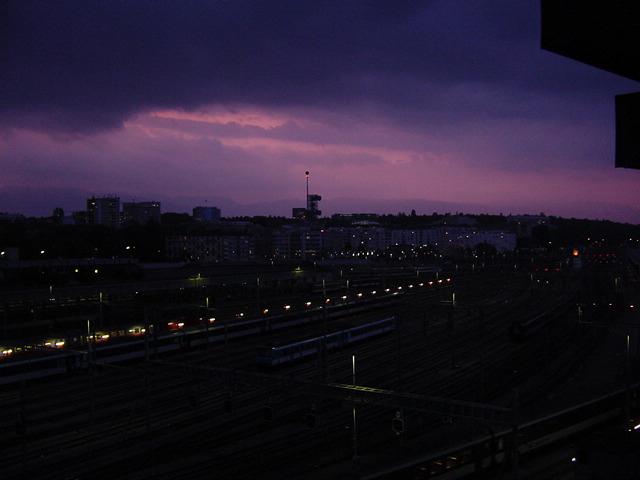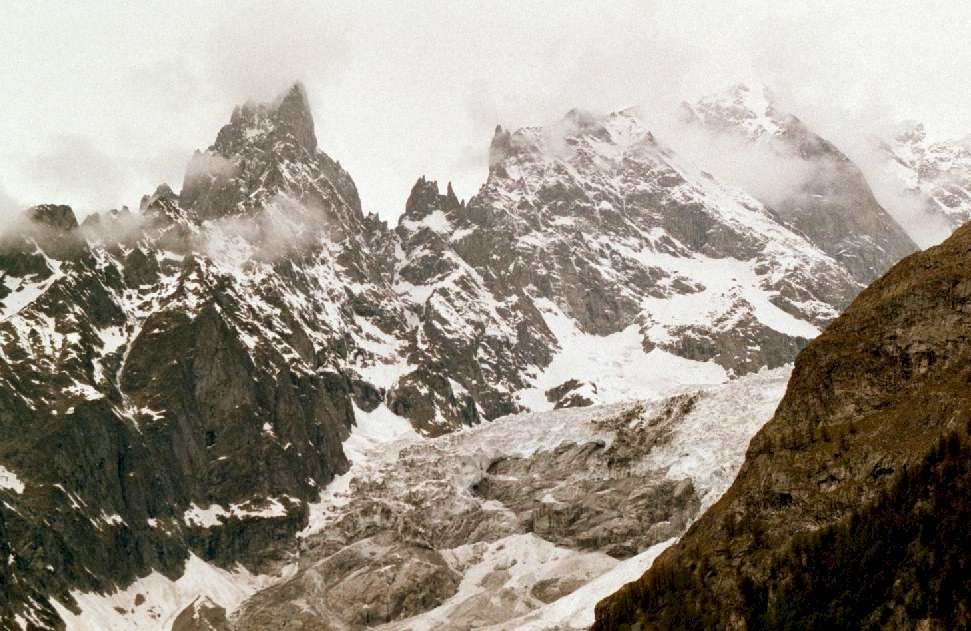|
Mary Shelley's Film Adaptations |
|
Margarette Connor |
|
|
| Frankenstein
|
| |
 Introduction Introduction |
 Lake
Geneva Lake
Geneva |
 June
16th June
16th |
 The
Evening's Challenge The
Evening's Challenge |
 Intense Reading Program
Intense Reading Program |
 Quickly
brought to Stage Quickly
brought to Stage |
 Film
Versions Film
Versions |
 Earliest
Frankenstein Earliest
Frankenstein |
 Series
Worth Nothing Series
Worth Nothing |
| |
| |
| Frankenstein:
Introductory Essay |
| |
 Introduction Introduction |
|
Mary Shelley's 1818 novel Frankenstein is
a complex blending of many different themes. Most people are
familiar with the story, at least the version that has been passed down
to us through the cinema versions, but many people are unaware of just
how very complex it is. |
| |
|
At the time she was writing it, Shelley was intellectually
stimulated--reading Romantic poetry with her brilliant husband Percy
Bysshe Shelley and his friends and working through John Milton's Paradise
Lost among
other great works. |
| |
|
But she was also grieving the loss of her first child, a terrible
tragedy for any one. But there was
more. Her half-sister Fanny Imlay had committed
suicide earlier in the summer, as had Percy's deserted and unhappy
wife, Harriet. |
| TOP |
 Lake Geneva Lake Geneva |
 |
Mary Shelley was only 19, far from home, on the banks of Lake Geneva,
Switzerland, during one of the worst summers on record. It
was cold and rainy that summer, and Geneva is no place to be under
those conditions! |
Modern Genevan
sunset. Even with the electric lights, it's
still an awe-inspiring sight. Photo: Margarette Connor |
|
| |
|
I've had the great good luck to
live in Geneva while teaching this novel, partially set in that city.
One summer course I spent doing this book and the film
versions of it was another horrible summer--wet, cold and full of
thunderstorms bouncing off the mountains that encircle Lake Geneva--the
Alps and the French Juras. After reading the book together
and watching the films, my class and I felt we had some additional
insights into what went into the book. While one of the
prettiest places on Earth, Geneva in the cold and rain can be quite
spiritually oppressive. |
| |
|
Most people aren't as lucky as we were--to be able to study Mary
Shelley's work "on the spot" is a rare privilege, but being aware of
the depth of the book, and being open to delving into it, enriches not
only the reading experience, but the viewing experience as well. |
| TOP |
 June 16th June 16th |
|
As all the introductions to the novel tell you, its inception came on a
very special night. Thanks to the torrential rains, the Shelleys could
not return to their own villa, so they had to spend the night at their
friend Lord Byron's villa, Villa Diodoti. The house party
included Mary's stepsister, Claire Clairmont, Lord Byron, and John
Polidori, Byron's physician. |
|
|
|
This house party is immortalized not only in the film The
Bride of Frankenstein, but
also in Ken Russell's strangely compelling Gothic (1986),
which gives a fictionalized account of the evening, with Natasha
Richardson as Mary Shelley, Julian Sands as Percy Shelley and Gabriel
Byrne as Byron. |
|
TOP |
 The Evening's Challenge The Evening's Challenge |
After giving themselves a
good scare reading a collection of German ghost stories, The
Fantasmagoriana ,
aloud, they set each other a task. Each would write
a horror story for the entertainment of the rest.
Shelley wrote a now-forgotten story, Byron wrote a story fragment, and
Polidori began the "The Vampyre", the first modern vampire tale, which
he later finished and published in 1819.
|
 |
| |
|
And poor Mary had a terrible time. She couldn't get started.
But a few days later, she had what she called "a waking
dream:" |
| |
|
"I saw the pale student of unhallowed arts kneeling beside the thing he
had put together. I saw the hideous phantasm of a man stretched out,
then, on the working of some powerful engine, show signs of life...His
success would terrify the artist; he would rush away...hope that...this
thing...would subside into dead matter...he opens his eyes; behold the
horrid thing stands at his bedside, opening his curtains... |
| |
|
( http://www.kimwoodbridge.com/maryshel/summer.shtml ) |
| |
|
The next morning Mary realized she had found her story and began
writing the famous lines that open Chapter Four of Frankenstein -
"It was on a dreary night in November". |
| TOP |
 Intense Reading Program Intense Reading Program |
|
As I said earlier, Shelley was doing some heady reading that summer.
In the days before the creation of her story she and Percy
had been reading and discussing Samuel Taylor Coleridge's "Christabel",
Germaine Necker, Madame de Stael's De
l'Allemagneas well as Milton's Paradise
Lost . |
| |
|
All of these influences can be found in the novel, but very few people
who hear the name "Frankenstein" think of an intellectual novel. |
| TOP |
 Quick brought to stage Quick brought to stage |
|
The first dramatization of Shelley's novel came during her own
lifetime. It was a three-act opera by R. B. Peake titled Presumption;
or, The Fate of Frankenstein (1823). |
| |
|
When Mary Shelley attended a performance of the play, she commented
that she was "much amused and it appeared to excite a breathless
eagerness in the audience" (quoted in Donald A. Glut, The
Frankenstein Legend ,
Scarecrow Press, 1973, p 32). A second adaptation opened the same year,
as did a trio of comedic versions. In 1826, new versions were staged in
London and Paris. |
| |
|
And the Frankenstein myth was off and running |
| TOP |
 Film Versions Film Versions |
|
A quick search for "Frankenstein" on imdb.com brings up 102 hits, not
including name matches! And that doesn't include films like
the recent Van
Helsing in
which Frankenstein's monster plays a key role in the story.
I discuss this film further on the Dracula introductory pages. |
| TOP |
 Earliest Frankenstein Earliest Frankenstein |
|
The earliest film Frankenstein was
a silent 1910 version by Thomas A. Edison! According to
imdb.com, "Since its original release, the Thomas Edison Frankensteinhad
been listed as missing; no copies of the film existed. An original
nitrate print finally turned up in Wisconsin in the mid-1970s. |
| |
|
"Prior to the film's rediscovery, only a few images of Charles Ogle as
The Monster were known to exist."
(http://imdb.com/title/tt0001223/trivia) |
| |
|
So Frankenstein was ripe for cinematic treatment from the very early
days of cinema. I won't have a chance to treat all of the
cinematic treatments. Indeed, most of them are not worthy of
comment, but I will be treating the most important: |
| |
|
Frankenstein (1931) |
|
Bride of Frankenstein (1935) |
| Young Frankenstein (1974) |
|
Mary Shelley's Frankenstein (1994) |
| TOP |
 Series worth nothing Series worth nothing |
|
After 1931's Frankenstein and
its sequel Bride
of Frankenstein ,
new directors and actors came on board and kept the franchise up.
Worth noting are 1939's Son
of Frankenstein and
1943's Frankenstein
Meets the Wolfman. |
| |
|
Also worth noting, as an excellent comedy-horror blend was 1945's Abbott
& Costello Meet Frankenstein.
Abbott and Costello were a beloved American comedy duo from radio, film
and television. |
| |
|
Finally, in the 1950s and 60s, England's Hammer Studios produced a
number of Frankenstein films, most of which were funny, campy and a
little scary. |
| TOP |
